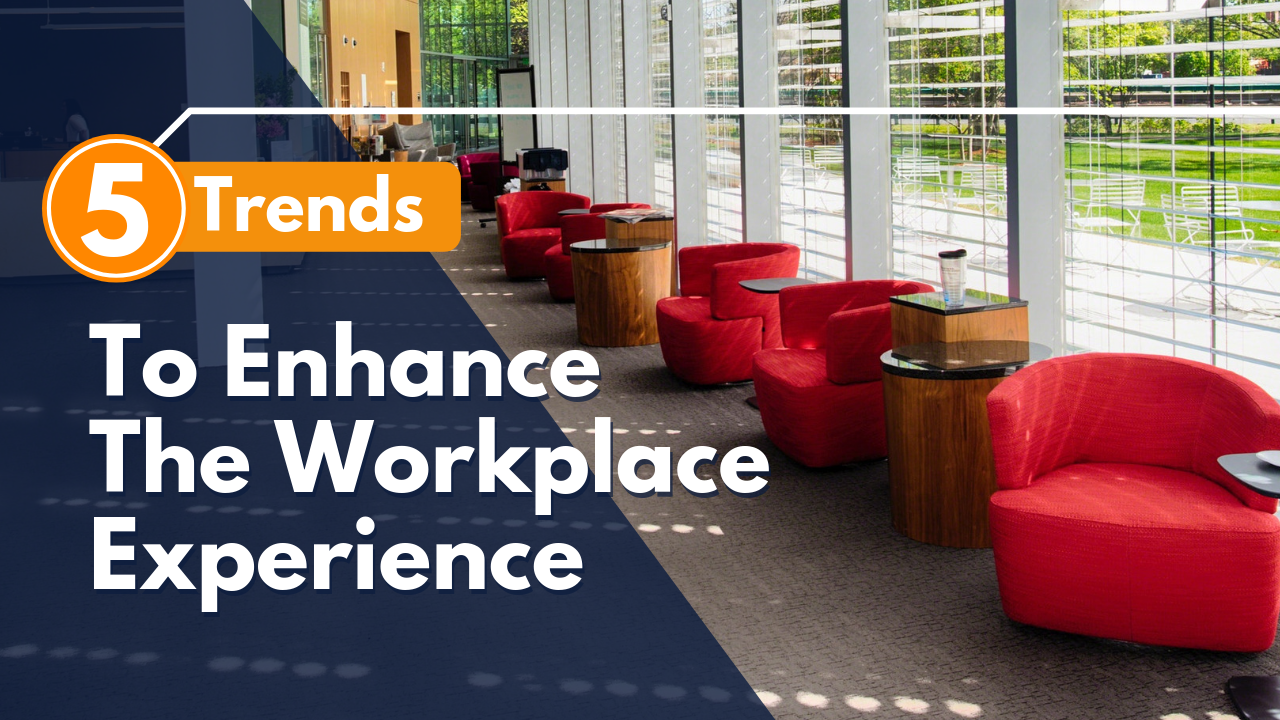The right workplace experience can help companies attract and retain talent, drive employee productivity, and improve company culture.
Companies are turning to design and technology to enhance their workplaces in order to cater to the needs of their workforce.
From smart technologies and ergonomic furniture to natural materials and wellness initiatives, a new report provides a glimpse into the different elements that companies are implementing.
The modern workplace environment is all about experience; striking the right balance between physical space, technology, amenities, and services. The right workplace experience can help companies attract and retain talent, drive employee productivity, improve engagement, and enhance company culture. All of which, when combined together, can translate into increased profits and revenue.
As the race to create the best workplace experience intensifies, companies have started utilizing design elements and technology in an attempt to create an awe-inspiring, one-of-a-kind experience. The report “5 Office Design Technologies Transforming Employee Experience” published by Future Offices provides a glimpse into the different design and technology elements that companies are implementing in order to cater to the needs and wants of the modern workforce.
5 Trends to Adopt to Enhance the Workplace Experience
1. IoT and Smart Technologies
“From work desks to climate control, IoT technology has the potential to reinvent almost every component of the modern office.” The Internet of Things can enhance the workplace as it enables a seamless experience across all touchpoints by exchanging data gathered from different devices, software, sensors, and more.
Take for example the much-debated topic of office temperature. Smart climate control systems and sensors can use real-time data to adjust temperature and maximize energy efficiency based on the temperature outside, how many people are in a room, etc.
Other applications include automated access, smart lighting, smart desks and workstations, and motion sensors to better understand how people use and interact with the workplace.
2. Ergonomics
A comfortable environment, equipped with the right tools can help drive productivity by as much as 20%. In order for people to perform their best, they need to feel their best. Advanced ergonomics can also help improve the physical, social, and mental wellbeing of the end-user, which in turn can help improve overall employee satisfaction.
Important ergonomic elements to take into consideration include ergonomic furniture, acoustics and soundscaping, height adjustable tables, height adjustable desktop arms, visible staircases, and ergonomic technology accessories (e.g. keyboards and mice that provide wrist support), and alternative seating options.

3. Digital Infrastructure
With more talk around the future of work, there’s been increased discussion about the digital workplace and the need for companies to embrace digital infrastructure to support modern working models. Though this includes implementing smart technologies, IoT, collaboration apps, and more, it also requires that companies equip workers to work anywhere at anytime.
Having a digital infrastructure in place can help companies raise employee engagement and agility; it can also facilitate communication, collaboration, and connections. But, by providing workers with a variety of choice in the workplace, digital infrastructure can also help reduce feelings of stress, overload, and burnout.
To learn more about the digital infrastructure in the workplace, read “Future of Work: The Rise of the Digital Workplace”.
4. Augmented Reality and Virtual Reality
“Though still in its infancy, augmented and virtual reality solutions are already changing the way companies engage with employees.” In many cases, companies are leveraging these technologies to enhance employee training and on-boarding.
These technologies can also be used to drive collaboration between remote and distributed teams by providing a meeting experience that’s immersive. AR and VR can also be used to improve workplace design and create highly engaging built environments, especially when combined with smart technologies.
5. Nature
Wellness is at the heart of the modern workplace and incorporating natural elements into the workplace can help improve the experience and wellbeing of the end-user. Studies have found that exposure to and experiences of natural environments “provide greater emotional restoration, with lower instances of tension, anxiety, anger, fatigue, confusion and total mood disturbance than urban environments with limited characteristics of nature.”
Suggested Reading: “11 Tricks to Maximize Natural Light in the Workplace”
Nature elements that can be incorporated into the workplace include:
- Access to nature views
- Plants and green life (Here are the 7 Best Low-Maintenance Plants for the Workplace)
- Water (you can add a fountain in your lobby or common area, or you can simply play water sounds)
- Scents (instead of using artificial smells, consider using natural scents like rosemary, lavender, etc.)
- Smart lighting that mimics the circadian rhythm
- Natural materials in furniture and decorations (wood, grains, stone, etc.)

You can learn more about how to leverage different trends and technologies to empower workers and drive productivity during the Future Offices Summer 2019 conference. Use code 20_ALLWORKSPACE for a 20% discount.


 Dr. Gleb Tsipursky – The Office Whisperer
Dr. Gleb Tsipursky – The Office Whisperer Nirit Cohen – WorkFutures
Nirit Cohen – WorkFutures Angela Howard – Culture Expert
Angela Howard – Culture Expert Drew Jones – Design & Innovation
Drew Jones – Design & Innovation Jonathan Price – CRE & Flex Expert
Jonathan Price – CRE & Flex Expert











